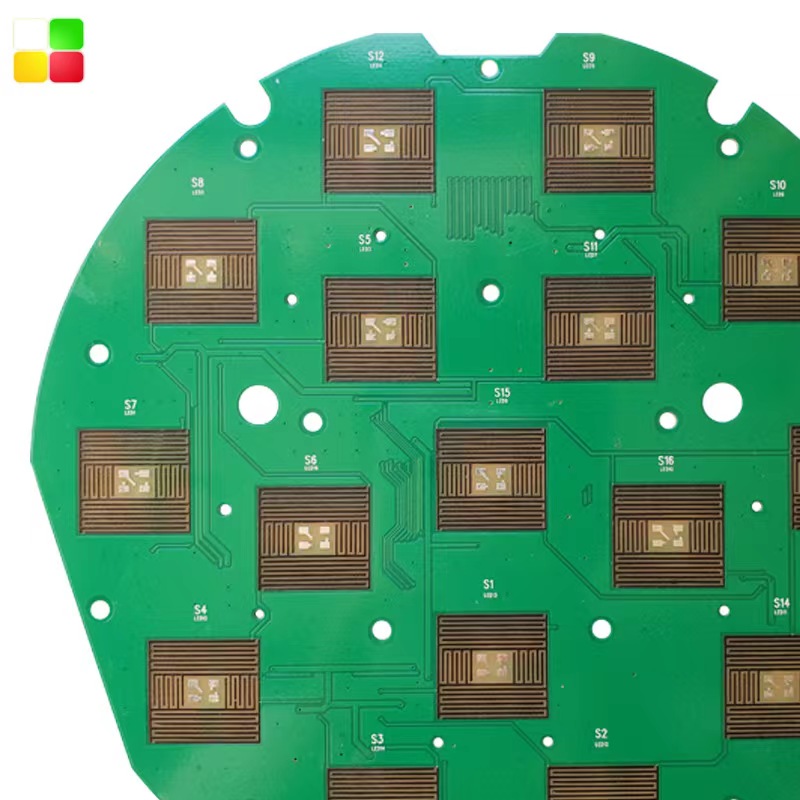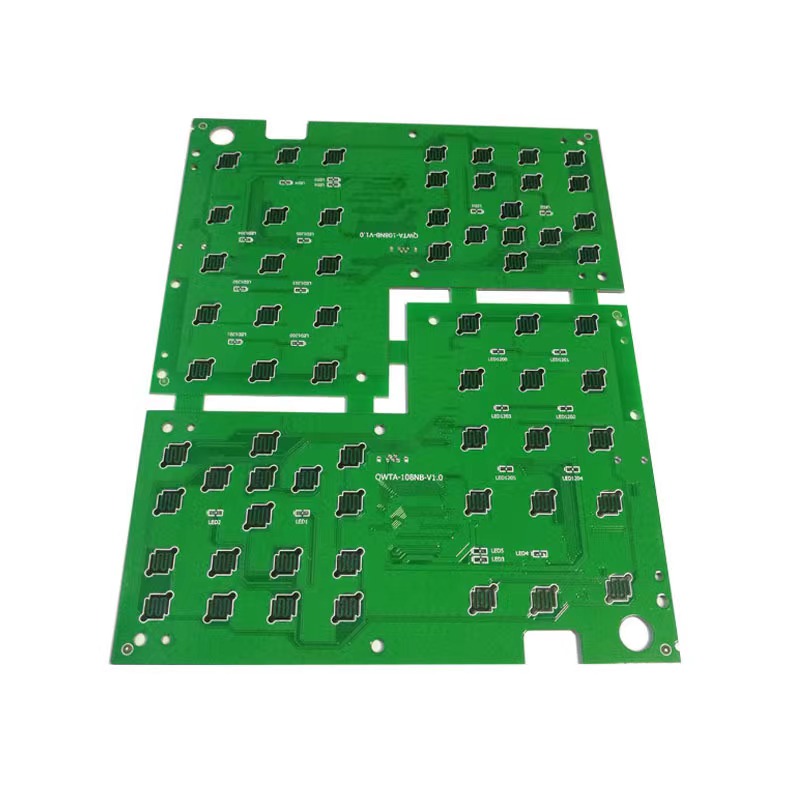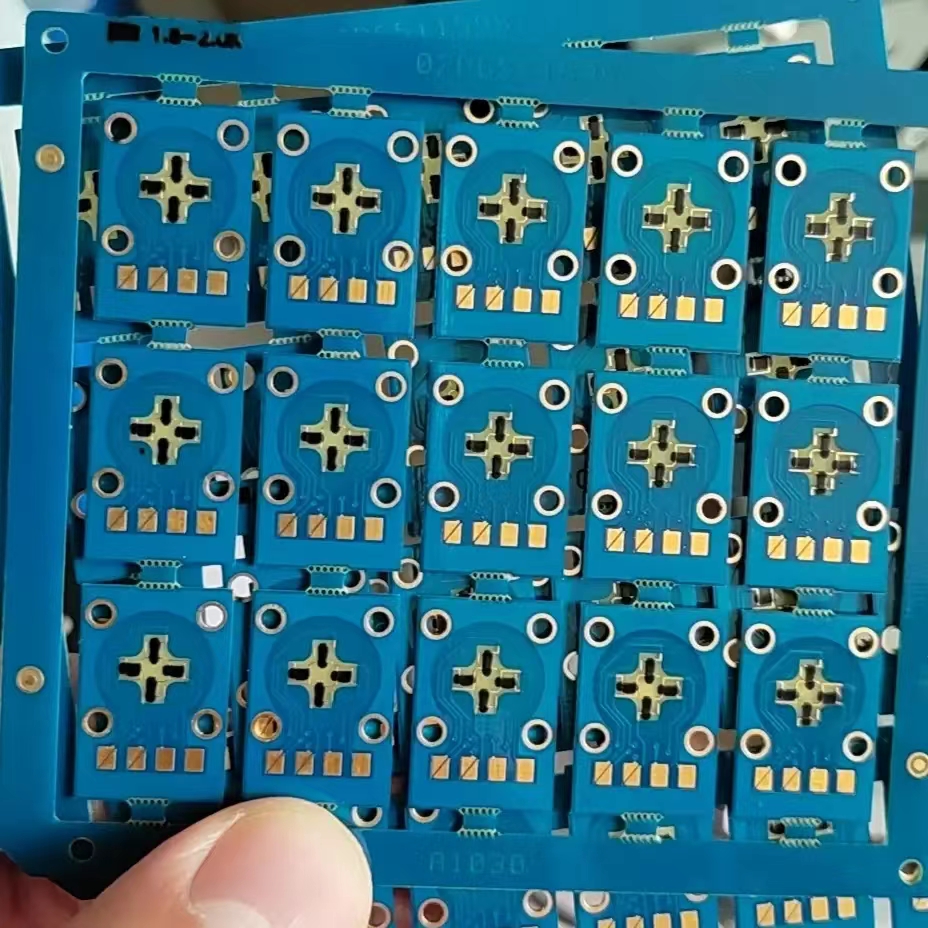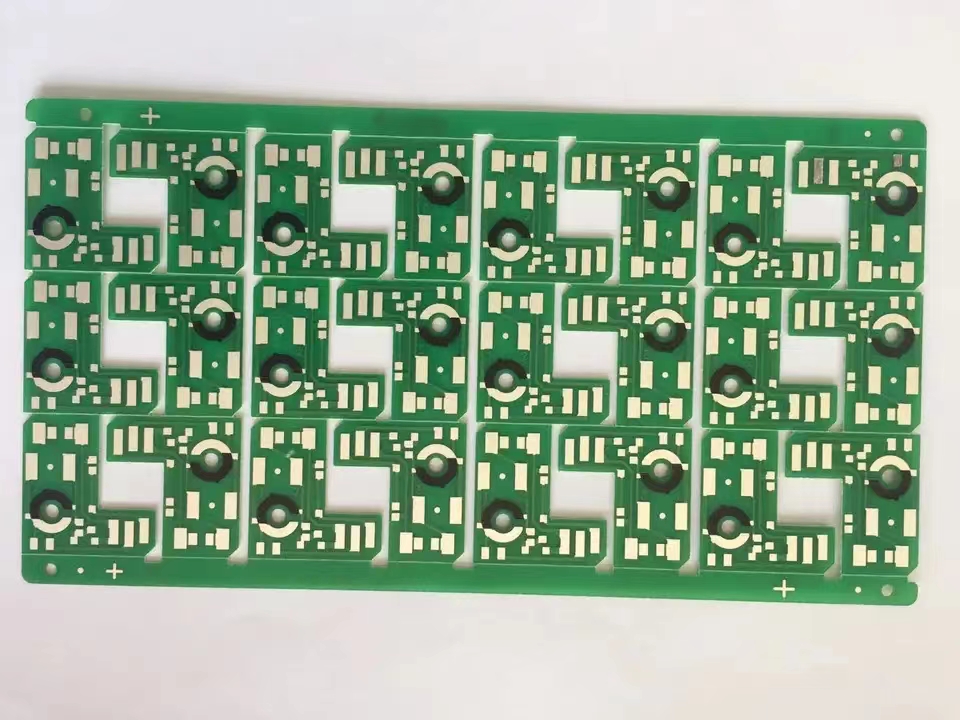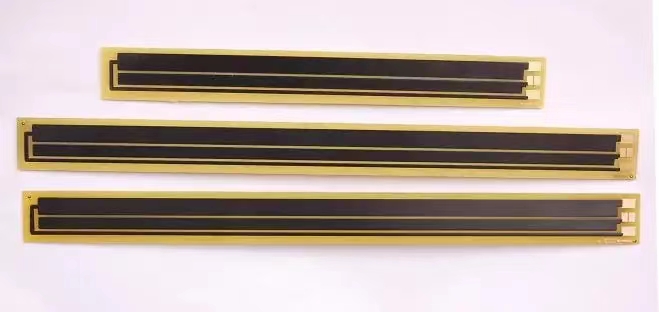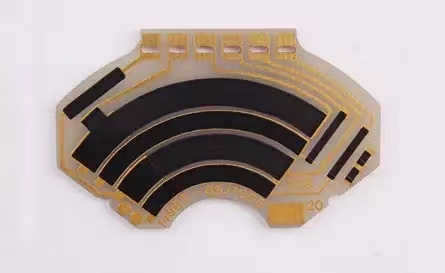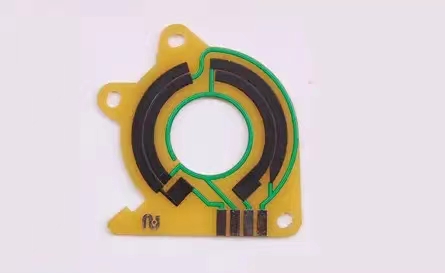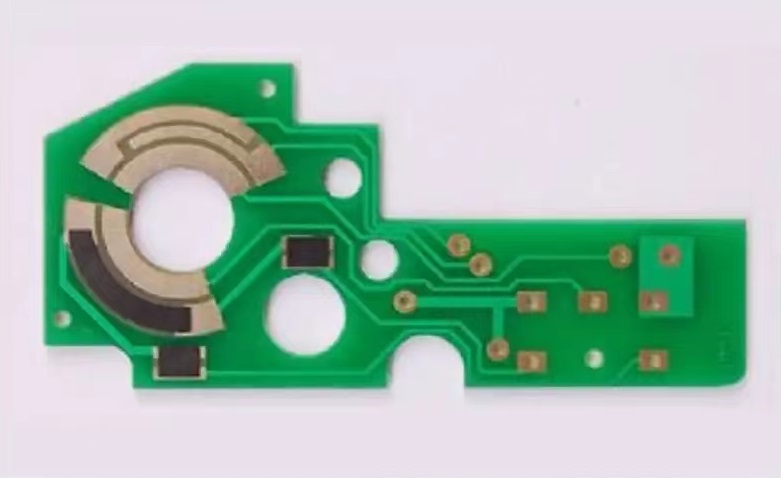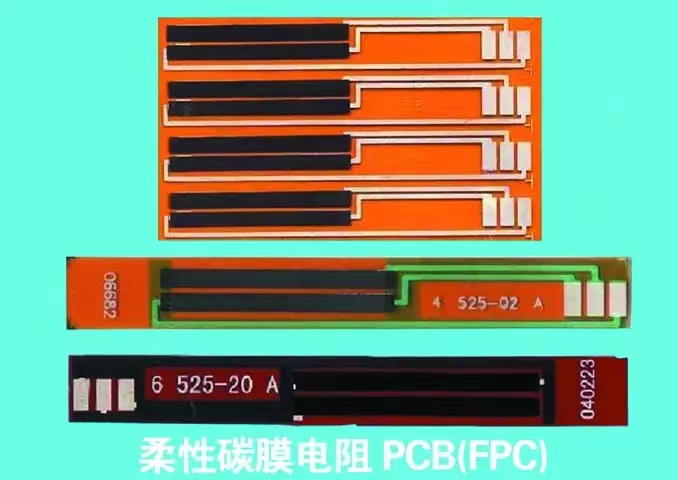1. Overview
The Carbon Ink PCB is made of carbon paste screen hole filling process. Carbon particles
are evenly distributed in thermoplastic resin to make conductive ink, and then covered
with soldermask. Its toughness is high, its thickness is thin, its insulation is good,
and its price is lower than that of gold plating. It is often used in high voltage,
pulse and high frequency circuits.
The most common methods of making circuits on printed circuit boards are subtractive
method and additive process method. Additive process uses electroless copper or
electroplated copper to generate circuits, and making conductive Carbon Ink PCB is also
a kind of additive process. Conductive carbon ink is used to make wires, which are
printed on insulators. With this method, it is easy and effective to make conductive
Carbon Ink PCB with various shapes for printing.
The production process of Carbon Ink PCB is a combination of subtractive method and
additive process's PCB board manufacturing method. At present, conductive Carbon Ink PCB
have made breakthrough progress in application fields, especially in electronic products
with low electric power. As a permanent conductive coating on conductive Carbon Ink PCB,
conductive Carbon Ink PCB have been adopted and popularized by many electronic
designers.
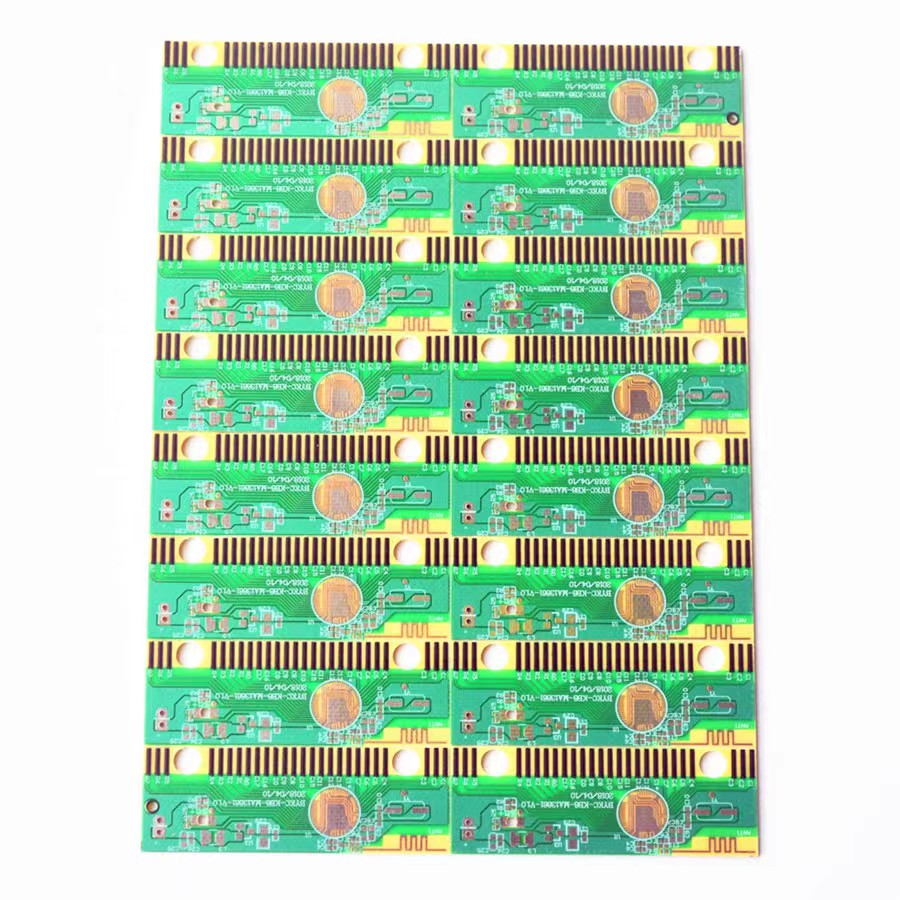
Conductive Carbon ink, with mature and stable production technology, leading product
quality, excellent printability, heat resistance and moisture resistance, and stable
heating performance, is widely used in far infrared drying oven, incubator, electric
blanket, sauna room, floor heating board for electric heating, and electric heating
in
greenhouse. It has broad development prospects.
At present, the conductive inks include: Carbon Ink, silver oil, high-resistance
Carbon
Ink, silver paste, transparent conductive oil, far infrared electrothermal ink, far
infrared electrothermal paint (low, medium and high), strippable protective ink
(circuit
board, ITO touch screen, anti-engraving), electromagnetic shielding and anti-static
paint, infrared thermal imager, Japan's TIONVT-04 particle size meter, temperature
measurement patch and other testing instruments.
2. Production process characteristics of Carbon Ink PCB
With the rapid development of electronic industry, conductive Carbon Ink PCB are
gradually adopted in common electrical appliances and instruments, which tend to be
multifunctional and miniaturized. Such as television, telephone, electronic organ, game
machine and video recorder. Its new technology and new functions are constantly being
developed and utilized, and the electronic fields such as computer keyboards, card
calculators, mini-recorders, electronic measuring devices and SMT are also beginning to
choose conductive carbon Carbon Ink PCB, thus enhancing its reputation and expanding its
demand.
The conductive Carbon Ink PCB adopts a simple screen printing process, and one or two
layers of conductive carbon ink patterns are added on a single-sided printed circuit
board to realize high-density wiring. The printed conductive patterns are used as
resistors, key switch contacts and electromagnetic shielding layers, etc., which adapts
to the development trend of miniaturization, light weight and multifunction of
electronic products.
Conductive ink has a wide range of applications, and is the first choice of most
electronic enterprises: conductive carbon paste screen for silica gel keys, conductive
Carbon Ink PCB, high-resistance carbon ink oil for potentiometer sliders, low-resistance
carbon ink oil for remote controllers, high-resistance carbon ink oil for electronic
organ tuning film, low-resistance carbon ink oil for PCB keys, conductive carbon ink for
PET film switches, high-resistance carbon paste for electronic drums, antenna Carbon Ink
for touch screens, carbon paste for inductive pens for capacitive screens, and
conductive circuit boards.
The characteristics of this process have the advantages of previous PTH PCB boards and
single-sided PCB, forming a single-sided double-layered PCB board without
interconnection holes; Simplifies the production process of PTH PCB boards, which can be
realized by steel mesh printing directly, is easy to master, light in weight, and can be
thinned, even phenolic cardboard can be used; Parts mounting holes can also be
processed; It is suitable for high volume PCB assembly production, shortens the
production cycle, reduces the production cost, and has no three wastes pollution--Waste
water, waste gas and solid waste.
Carbon Ink PCB can shorten the production cycle of double-sided PCB board by two thirds;
The volume of the whole machine is reduced by one quarter to one third; The assembly
efficiency of the whole machine is increased by 30%; The production cost is reduced by
one-third, so that more double-sided PCB boards or simple multi-layer PCB boards are
transformed into conductive carbon Ink PCB. As far as the technical specifications of
conductive Carbon Ink PCB are concerned, IEC1249-5-4 contains some technical
instructions on conductive coatings; Japan's Hitachi, Toshiba, Panasonic and other
famous companies also have some technical specifications for conductive Carbon Ink PCB;
Some ink manufacturers, such as Coates, Acheson, Asahi and so on, also have the
technical conditions of conductive ink; But these are only some simple explanations and
introductions; In 1998 (Shenzhen Sheng Tian Feng Technology Co., Ltd. was established),
the standard SJ/T11171-98 "Specification for NPTH Single-sided and Double-sided
Conductive Carbon Ink PCB" issued by China's electric industry comprehensively discussed
the technical conditions and testing methods of conductive carbon ink PCB boards.
Process control of Carbon Ink PCB in screen printing room
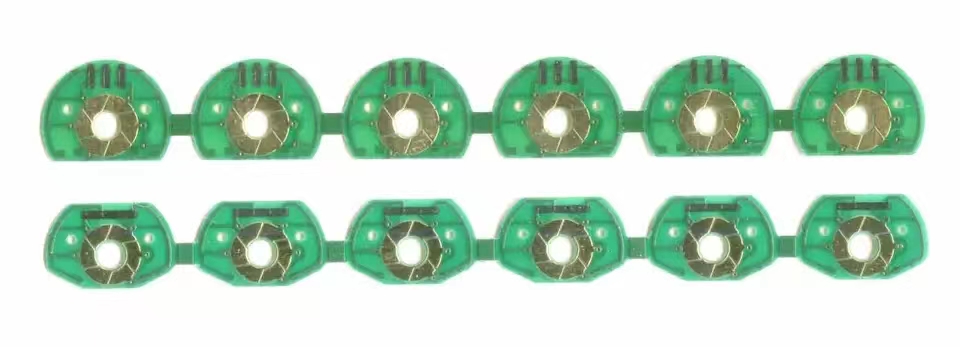

In fact, the process control of Carbon Ink PCB in screen printing room is neither simple
nor complex. Let's take a look at the following aspects:
1.Operators must wear gloves to work.
2.During production, the process parameters of each machine and equipment must be
carried out according to the relevant operation instructions, and shall not be
arbitrarily changed.
3.All machines and equipment must be clean, and there must be no dust, garbage, oil and
other sundries on the surface.
4.Screen printing speed and ink returning speed and suction pressure should be
controlled in the best range. (Take the printing effect as the inspection basis).
5.Screen, scraper and Carbon Ink shall be selected according to the requirements of
engineering MI.
6.The oil must be stirred evenly before use, the viscosity detected by viscometer is
within the required range, and the ink should be sealed in time after use.
7.Before printing, the grease, oxide and other pollutants on the board surface must be
cleaned, and all carbon-filled Carbon Ink boards must be confirmed by the first board of
QA before they can be officially produced.
8.In the process of silk-screen printing, the operator should check at least 2PNL per
printing plate, and increase the number of self-checks in special circumstances. 4.9
Drying temperature of Carbon Ink plate is 150℃ for 45 minutes. The drying temperature of
the oil-filled hole is 150℃ for 20 minutes, and then
9.For oil resistance measurement, the resistance value of Carbon Ink via hole should be
less than 100 ohms, the square resistance of carbon wire should be less than 25Ω/ port
(the length of carbon wire ÷ the width of carbon wire× 25 Ω), and more than 2/3 of the
oil in the Carbon Ink irrigation hole can be detected according to the drawings of
engineering department and the points required by MI.
10.The operator of the baking sheet shall fill in the time when the baking sheet is put
into the furnace, the time when the baking sheet is put out of the furnace, the
temperature quantity, etc. After being put out of the furnace and cooled, the operator
shall inform QA to carry out random inspection of carbon resistance and adhesion test.
11.Each Carbon Ink screen has reached 2,500 prints, so it must be returned to the net
room for re-drying the new screen.








